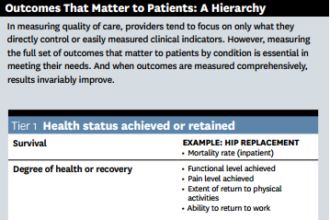You probably saw recent news about a novel new treatment for spinal cord injury that enabled a man with a severed spinal cord to walk. Cells were cultivated from olfactory cells and implanted in his spine. While this is a phenomenal outcome, medical professionals were slightly more cautious.
You probably saw recent news about a novel new treatment for spinal cord injury that enabled a man with a severed spinal cord to walk. Cells were cultivated from olfactory cells and implanted in his spine. While this is a phenomenal outcome, medical professionals were slightly more cautious.
It is premature at best, and at worst inappropriate, to draw any conclusions from a single patient,” said Dr. Mark H. Tuszynski, director of the translational neuroscience unit at the medical school of the University of California, San Diego quoted in the New York Times article about the case.
Why the caution? Well first off it’s one patient. Dr. Tuszynski warned that this example might lead others with spinal cord injuries to have false hope. In rehabilitation medicine in general, and spinal cord research in particular it’s stressed that there will need to be many specialized approaches based on each patient’s situation. Earlier this month we heard similar caution from V. Reggie Edgerton, the John Stanley Coulter Award Lecturer at the ACRM conference in Toronto.
We’re at the Model T stage” said V. Reggie Edgerton, during the lecture, referring to spinal cord research. “We’re learning new physiological concepts on how we control movement and previously held beliefs are beginning to be challenged. New technology will help us take advantage of these new understandings, like for example, that the spinal cord can learn.
Automaticity is key to what we’re now learning about spinal cord rehabilitation. Automaticity is the “ability to do things without occupying the mind with the low-level details required, allowing it to become an automatic response pattern or habit. It is usually the result of learning, repetition, and practice.” (Another way to consider the concept is that the only way to get a thought out of your brain is through movement, so if this didn’t become an automatic response, we’d too many thoughts going on at any one time to hear ourselves think. ;))
It had been thought that once the spinal cord is severed from the brain, this automaticity is lost. However, in experiments with animals with severed spinal cords, fully functional humans, and humans with spinal cord injury, Dr. Edgerton and team, successfully triggered the spinal cord to cause movement in the legs. That is “the spinal cord knows how to walk.”
An even more compelling result from the studies is that while in the humans without spinal cord injury who were tested, the movement of the legs was involuntary based on neuro-stimulation, one of the rats that had a severed spinal cord was seen ‘walking’ toward a food source in front of him when his spinal cord was stimulated. From these two breakthroughs, the team was able to extend the study to humans with spinal cord injury. Dr. Edgerton showed an extremely compelling video where a Parapelegic man was able to stand and balance while catching a ball, but only during the time that the stimulation was applied. Similarily another patient is shown moving his leg while the stimulation is applied, demonstrating that the neuro-stimulation is able to make the connection between brain and spinal cord. The spinal cord, however, does need to know what to do to begin with which is what was shown in the studies using people without spinal cord injury, that is that the spinal cord has movement memory “built-in.”
Interestingly the first human with spine injury subject took significantly longer than later subjects to move his leg. Researchers think that this is because later subjects had heard of his success, and therefore expected it to work, while the first subject was extremely doubtful.
This amplification through neuro-stimulation is able to reengage the automaticity and enables rather than induces movement. What these studies tell us is that the system has placidity for years after the injury and that if you provide the spine with proprioceptic information, it knows what to do with it. Dr. Edgerton refered to this in those of us who are not paralyzed as “the spine is just being nice to the brain when the brain tells it what it was going to do anyway.”
The stimulation only worked up to a point, and subjects seemed to know intuitively what that point was. Too little stimulation and there is no response, too much stimulation and there is a loss of control.
Robotics will play a key part in this type of recovery. For example, adding the stimulation to an exoskeleton.
Dr. Edgerton cautioned that there is a long road ahead and still a lot of research: this study was only done with 10 subjects. However every one of those subjects gained voluntary control. He also stressed, similar to most of the presentations we were able to attend, that there is no “one size fits all approach.” Care and care teams will need to be specific to the type of injury sustained and the needs of the patient.
Regardless, the research that Dr. Edgerton and his team did shows that we need to redefine “completely paralyzed”: paralysis is no longer an all or none proposition, which is truly amazing. Thinking back to the Model-T analogy, one can hardly what it will be like when spinal cord innovation reaches the Tesla level.









